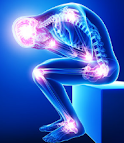Have you ever thought about the magic behind using your phone or computer? It's not just about the hardware and software; there's a whole science behind creating technology that feels intuitive and user-friendly. This field is called Human-Computer Interaction (HCI), and it's a fascinating blend of psychology, sociology, and computer science.
Understanding You, Understanding the System
HCI is all about the relationship between humans and the technology they interact with. Guar and colleagues (2024) do a fabulous job in their research article presenting these three critical things for a good relationship:
- The User: This involves delving into your psychology - your goals, thought processes, and problem-solving skills. It also considers your physical limitations (ergonomics) and how you interact with others (sociology-ish).
- The System: This is the technology itself, including the software, hardware, and interface design.
- The Connection: This is where the magic happens! HCI experts consider how these elements work together to create a seamless experience.
Beyond the Screen: The Rise of Virtual Reality
Virtual Reality (VR) is a prime example of how HCI pushes boundaries. VR uses your senses to create an immersive experience. Imagine exploring a historical site or learning a new skill, all from the comfort of your home! For VR to work effectively, the interface must understand your hand movements and translate them into actions within the virtual world (Guar et al., 2024).
The Future of HCI: Reading Your Mind (Almost!)
The field of HCI is constantly evolving. Researchers are exploring how computers recognize our actions, emotions, and social cues. Imagine a system that can adjust its communication style based on whether you're feeling frustrated or relaxed.
Of course, there are challenges. HCI must account for cultural differences in nonverbal communication and the complex interplay of emotions that can influence our interactions with technology. (Guar et al., 2024)
The Psychology Behind the Click
Here's where psychology comes back in. HCI research utilizes cognitive theories to understand how people process information on screens (Guar et al., 2024). This helps designers create interfaces that are easy to understand and remember.
Gone are the days when HCI focused solely on keyboards and mice. Today, HCI recognizes the role of our entire thought process in how we interact with technology.
HCI is a fascinating field that bridges the gap between humans and technology. By incorporating insights from psychology, sociology, and cutting-edge advancements, HCI ensures that our tech experiences are functional, enjoyable, and emotionally engaging (Guar et al., 2024).
References
- Guar, V., Bhatt, A., & Gupta, N. (2024). An Interactive Study of AI and Psychology [Review of An Interactive Study of AI and Psychology]. International Journal of Early Childhood Special Education, 14(8).





























